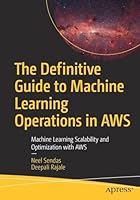
Principles of Data Mining, 2nd Edition
- Length: 454 pages
- Edition: 2
- Language: English
- Publisher: Springer
- Publication Date: 2013-03-08
- ISBN-10: 1447148835
- ISBN-13: 9781447148838
- Sales Rank: #2463867 (See Top 100 Books)
Data Mining, the automatic extraction of implicit and potentially useful information from data, is increasingly used in commercial, scientific and other application areas.
Principles of Data Mining, 2nd Edition explains and explores the principal techniques of Data Mining: for classification, association rule mining and clustering. Each topic is clearly explained and illustrated by detailed worked examples, with a focus on algorithms rather than mathematical formalism. It is written for readers without a strong background in mathematics or statistics, and any formulae used are explained in detail.
This second edition has been expanded to include additional chapters on using frequent pattern trees for Association Rule Mining, comparing classifiers, ensemble classification and dealing with very large volumes of data.
Principles of Data Mining, 2nd Edition aims to help general readers develop the necessary understanding of what is inside the ‘black box’ so they can use commercial data mining packages discriminatingly, as well as enabling advanced readers or academic researchers to understand or contribute to future technical advances in the field.
Suitable as a textbook to support courses at undergraduate or postgraduate levels in a wide range of subjects including Computer Science, Business Studies, Marketing, Artificial Intelligence, Bioinformatics and Forensic Science.
Table of Contents
Chapter 1 Introduction to Data Mining
Chapter 2 Data for Data Mining
Chapter 3 Introduction to Classi.cation: Na¨ive Bayes and Nearest Neighbour
Chapter 4 Using Decision Trees for Classi.cation
Chapter 5 Decision Tree Induction: Using Entropy for Attribute Selection
Chapter 6 Decision Tree Induction: Using Frequency Tables for Attribute Selection
Chapter 7 Estimating the Predictive Accuracy of a Classi.er
Chapter 8 Continuous Attributes
Chapter 9 Avoiding Over.tting of Decision Trees
Chapter 10 More About Entropy
Chapter 11 Inducing Modular Rules for Classi.cation
Chapter 12 Measuring the Performance of a Classi.er
Chapter 13 Dealing with Large Volumes of Data
Chapter 14 Ensemble Classi.cation
Chapter 15 Comparing Classi.ers
Chapter 16 Association Rule Mining I
Chapter 17 Association Rule Mining II
Chapter 18 Association Rule Mining III: Frequent Pattern Trees
Chapter 19 Clustering
Chapter 20 Text Mining
A Essential Mathematics
B Datasets
C Sources of Further Information
D Glossary and Notation
E Solutions to Self-assessment Exercises







